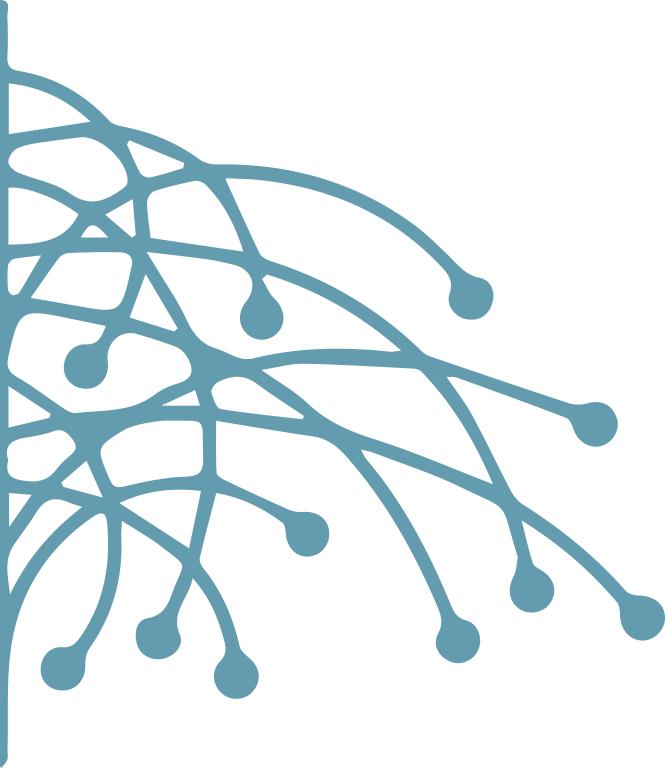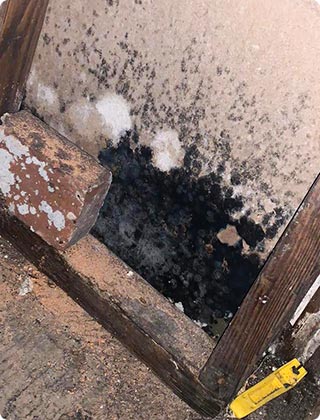MENU


There is no arguing the fact that the air we breathe in is very important. Any form of contaminants in the air can lead to severe health issues, especially in children and pets. It is why we deal with any issues that might pollute our air space quickly.
However, there is one enemy that sneaks by quite often in our homes. It's Black Mold! This mold can hide in the air in the form of mold spores or settle in hidden places in the house. It can affect your lungs and other organs before you detect black mold at work.
Wise people say the cure is in prevention. You can prevent problems from black mold and any other type of mold in your home by detecting the mold early. The only question left is how?
We have the best mold detection services and methods, and we have explained some of them in this article. You would find mold detection easier with our advice. But first, let's look at a few instances where you need mold detection.
Mold detection could mean mold inspection and mold testing. It could involve both activities or just one. Mold testing helps to identify the kind of mold in your house and if the mold spores are in a good area for growth. The aim of a mold inspection is just to find the mold.
You don't need mold testing in every situation. If you can see the mold, you might not need mold testing. Once you detect mold, whether it is black mold or not, the first step should always be towards its professional removal.
This list is in no way exhaustive. If for any reason you suspect there is mold but you can't physically see any, it doesn't mean there isn't any. You should contact a mold detection company. The professionals will help you detect black mold before the situation becomes worse.
You might be interested in the methods used by professionals to detect black mold. While we always advise people to let professionals do the job, the methods are not such a secret! We have shared some of the best mold detection methods below.
Mold has the nasty habit of hiding and considering that it is a danger to everyone when indoors, it is essential to detect mold early. Note that knowing the right mold detection methods is not enough. You still the right mold detection equipment with adequate knowledge to execute it.
This mold detection method involves taking samples from airborne spores or the dust in the air. This sampling would help you know the type of mold that is airborne in the area. You can also learn about how much mold is growing from the density of mold spores collected in the sample.
Some of the equipment used for this type of sampling are spore traps, air sampling cassettes, and negative pressure pumps. The spore traps are the most common mold detection equipment used for this sampling. It is not as expensive as other air sampling equipment and it saves time.
Unfortunately, the air sampling method doesn't tell you the specific location the mold is coming from. You would have to take a guess at it or use visual inspection. However, it is best for knowing which types of mold are in your indoor air, and at what quantities in relation to each other.
Surface sampling involves taking samples from different areas and testing them in a lab for mold. The common mechanisms used to facilitate this method are tape lifts, swabs, and bulk samples. Each of these mechanisms involves different processes.
For the tape lift, the adhesive side of the tape or slide is pressed against the moldy surface and the sample mold is taken to a lab for analysis. Tape lifts are the most common surface sampling mechanism. For swabs, the tip of the sterile swab is rubbed against the suspected area and the swab is cultured and analyzed in a lab.
Bulk samples are quite different and it's mostly used when the infected area is quite obvious and the mold has spread. For this sampling, a part of the infected material is cut out and taken to a lab for analysis.
Surface sampling can be done quickly and helps to get the initial feel of a site. It would help you know all the mold in the small area analyzed. However, it can also be problematic as one small area cannot determine the state of a larger area.
You might also not pick up the mold as the sample might not cover the small scattered areas where it is growing. Surface sampling is best when you can see the mold and it is not spread over a large area.
Visual mold inspection is just what its name implies. Expert mold inspectors make use of their experience and equipment to locate areas with possible or existing mold growth. There are different types of equipment used to aid this process.
Inspectors make use of infrared cameras, moisture meters, hydro-thermometers, borescopes, smoke pens, flashlights, UV lights, and even compasses. These mold detection tools are used while the inspector wears personal protective equipment (PPE).
The protective gear helps to keep inspectors safe from the many hazards of the job. When they detect black mold, they do not stand in any danger and can carry out their job without fear. PPE is an essential part of any mold detection method, regardless of the size of the job.
Visual inspections are great when you are trying to find the cause of mold growth or find hidden mold growth. However, if you want to know if there are any mold spores in the air or the type of mold, the mold detection method is of no help. Essentially, you can't detect black mold with this method.
Now, you know the different mold detection methods used to detect mold. Don't rush out to get the equipment or a home test kit! It is not the best option for you.
The mold testing laboratory analysis would help you learn the contamination levels in your home. When done by professionals, you would also get a simple interpretation of the test results. The mold testing experts would also inform you of the next step, whether you need a mold remediation protocol or not.
In most cases, you only need a visual mold inspection to know if there is mold growth and its location. Only certain cases require air and surface sampling. They are used when you need to know the type of mold and if it is still in the air.
Once the mold growth is confirmed with high levels from test results, the next step is mold remediation! However, you need to carry out mold detection before you know what next to do. Are you looking for a professional mold detection service?
At O2 Mold Testing, we can help you inspect your home and detect black mold before it becomes a menace. We have experienced inspectors armed with modern professional equipment. Our different services help to detect mold at any stage. We love helping customers find mold so they can take care of it.
Whether you want air sampling, surface sampling, or visual mold inspection, we have you covered. You can reach out to us for a professional mold detection service.
Call us today at 888-202-1680 - Let's find that hidden mold for you!